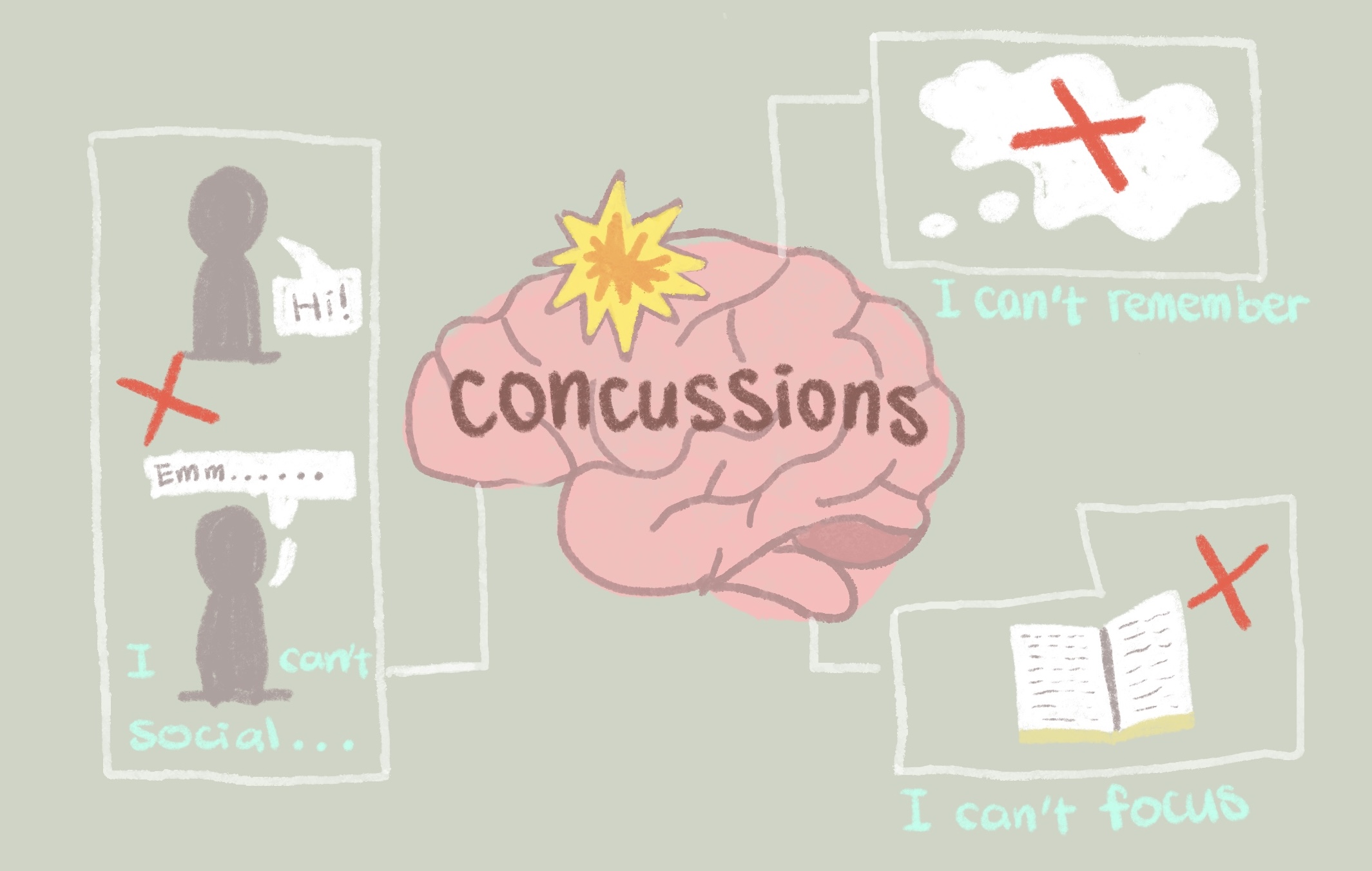Understanding the impact of concussions on student life
Noah Csaky-Schwede’s fight to overcome his concussion’s physical, mental, and academic impact on his life as a UTM student-athlete.
Noah Csaky-Schwede is a Geographic Information Systems major in his third year at the University of Toronto Mississauga (UTM) and suffered a concussion in 2023 while playing goalie for the UTM ice hockey team. His injury happened as an opposing player’s hip made contact with his head while making a save. Although hockey players wear protective equipment for these situations, it is often not enough to protect the brain from the immense force.
Noah’s concussion can be categorized as a sports-related concussion (SRC). The term is defined in a study by Mark Halstead, doctor at Washington University, along with Dr. Kevin Walter and Dr. Kody Moffat, from the American Academy of Pediatricians as a “traumatic brain injury induced by biomechanical forces.”
Biological Functioning
A traumatic impact to the head results in an outward flow of potassium from the brain, referred to as a potassium efflux. During this potassium efflux, there is also a calcium and sodium influx. Sodium and calcium’s arrival, paired with potassium’s withdrawal, cause the brain’s neuronal activity to become depressed, resulting in the brain performing much slower than it once did. The calcium influx in the brain can also damage the cytoskeleton, causing axonal injury. Axons are cables that send signals and messages within the brain; and, when they’re damaged, the brain cannot perform what were once basic human functions.
The brain’s inability to send messages may cause, headaches, vision problems, sleeping difficulties, and many other physical and mental problems. SRCs can be extremely dangerous, especially for younger individuals. According to Walter, Moffat and Halstead, “Findings suggest that the young brain may be more vulnerable to axonal injury because myelination is an ongoing maturational change throughout brain development.” Myelination, or myelin, is the tissue that surrounds the axons to insulate and protect them and does not fully develop within human beings until the age of 30. Therefore, young adults like Noah are at greater risk of receiving an SRC than someone with fully developed myelin.
Preventing SRCs
Looking at the research done by Halstead, Walter, and Moffat, along with the Council of Sports Medicine and Fitness, the most optimistic prevention method seems to be education on the topic. Their article states, “Several studies have demonstrated the benefit of education efforts in improving concussion knowledge, reducing referrals for neuroimaging, and increasing the likelihood of reporting SRCs.”
If and when athletes become aware of what SRCs are and their potential symptoms, they may be able to recognize that they have one and can report it to their coach, or trainer immediately. Coaches and staff can pinpoint when and why a player received a concussion, and look into potentially adjusting the rules of the sport or increasing the amount of equipment for players to wear, in the hopes of reducing future SRCs. While this may upset some sporting purists, I think most people would agree that if rule changes or increased protection decreases the number of student-athletes receiving SRCs, then it is definitely worth it.
Back to School
Noah eventually returned to the classroom after his concussion but was unable to perform to the best of his ability because of his symptoms. “The symptoms of my concussion were pretty bad. Bright lights, loud sounds, computer screens, and general mental effort all gave me a bad headache. It lasted for about a month and completely took me out of working on any schoolwork.” Noah’s inability to do schoolwork at the same level as before his concussion provides further evidence for Halstead’s claim stating that the brain struggles to perform previously standard actions after a traumatic impact. Noah suffered both physically and academically due to his injury. The sheer volume of work he missed because of his injury meant falling behind in some classes.
The Future
Sports-related concussions are a topic that sports leagues around the world have paid close attention to in recent years. Even though we still don’t have all the information, we do know that the effects of a concussion can linger long after an athlete retires.
Further research is necessary to effectively and efficiently diagnose SRCs and ensure that student-athletes like Noah are given the necessary resources and affordances to recover physically, mentally, and academically.

